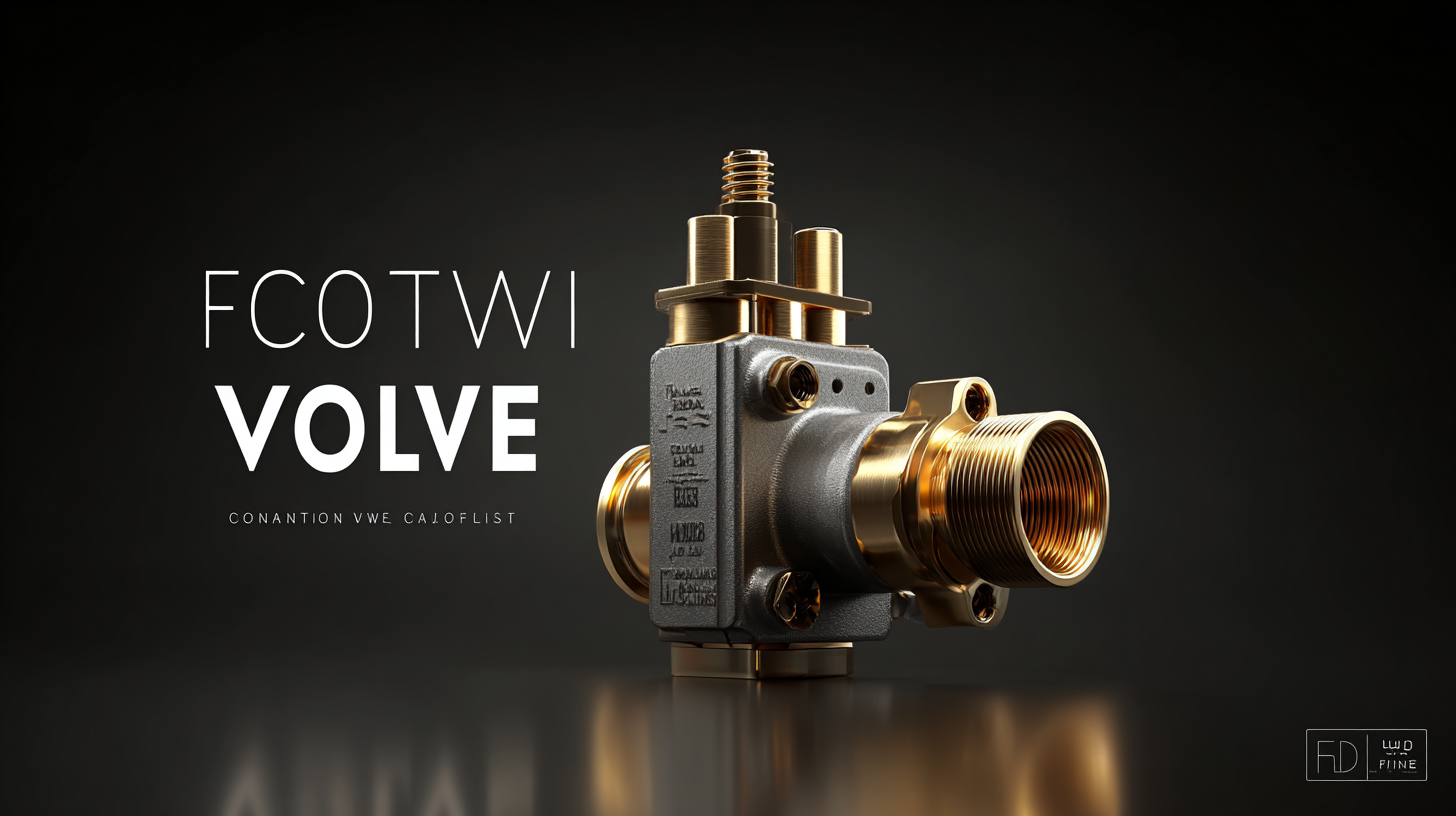Ultimate Guide to Best Flow Control Valve Innovations and Future Trends in 2025
In the ever-evolving landscape of industrial automation, Flow Control Valves are emerging as pivotal components that enhance operational efficiency and optimize resource management. According to a recent market report by Research and Markets, the global flow control valve market is projected to reach USD 12 billion by 2025, growing at a CAGR of 5.2%. This growth is driven by advancements in technology and increasing demand for precision in fluid handling across various sectors, including oil and gas, water treatment, and pharmaceuticals. As we delve into the ultimate guide on the best flow control valve innovations and future trends for 2025, we will explore the latest developments in valve technology, examine their potential impacts on industries, and provide insights on how companies can leverage these innovations to stay ahead in a competitive market.

Emerging Technologies in Flow Control Valve Design for 2025
The realm of flow control valves is poised for significant transformation in 2025, driven by emerging technologies that emphasize efficiency, smart integration, and sustainability. One of the most notable innovations is the deployment of IoT-enabled valves that allow for real-time monitoring and remote operation. By incorporating sensors and advanced analytics, these valves can optimize flow rates dynamically, leading to enhanced system performance and reduced operational costs. Moreover, predictive maintenance capabilities afford industries the ability to foresee potential failures, enabling proactive interventions that minimize downtime.
Another promising trend is the advancement of materials used in valve manufacturing. The shift towards lightweight, corrosion-resistant materials not only increases the valves' lifespan but also improves operational efficiency by reducing energy consumption. Furthermore, the integration of artificial intelligence in valve design is set to revolutionize how these essential components are customized and manufactured. AI algorithms can simulate various operational scenarios, allowing for the creation of valves that are precisely tailored to specific industrial applications. This convergence of technology and material science signifies a new era in flow control systems, paving the way for smarter, more resilient infrastructure in the years to come.
Innovations in Flow Control Valve Technologies by Year
Sustainable Alternatives to Traditional Flow Control Valves
As industries increasingly prioritize sustainability, the demand for eco-friendly alternatives to traditional flow control valves has surged. According to a recent market research report, the global market for sustainable flow control solutions is expected to grow by 20% annually over the next five years. Innovations in materials such as bioplastics and advanced composites are leading the way, offering not only reduced environmental impact but also enhanced durability and efficiency. These materials contribute to lower energy consumption during production and end-of-life disposal, aligning with the goals set in global sustainability initiatives.
Tip: When selecting flow control valves, look for products that mention sustainable materials and energy-efficient designs. This not only supports environmental goals but can also result in cost savings over time due to their longevity and lower maintenance requirements.
Moreover, technologies like IoT-enabled smart valves are setting the framework for the future of flow control in industries like water management and oil and gas. The integration of sensors allows for real-time monitoring, reducing waste and enhancing system reliability. A recent study indicated that smart flow control systems can decrease energy consumption by up to 30%, making them a lucrative investment for companies looking to optimize their operations sustainably.
Tip: Invest in smart flow control technologies that provide real-time data analytics. This can help identify inefficiencies in your flow systems, driving further sustainability and cost reduction.
Innovative Materials Revolutionizing Flow Control Valve Performance
The world of flow control valves is undergoing a significant transformation, primarily driven by innovative materials that enhance their performance. In 2025, we can expect to see a surge in the use of advanced polymers and composite materials that not only reduce weight but also improve chemical resistance and durability. These materials enable manufacturers to design valves that can withstand extreme conditions, providing more reliable and longer-lasting solutions for various industries, from oil and gas to water treatment.
Tips for selecting the right flow control valve:
Firstly, consider the application demands—high temperatures and corrosive environments require materials specifically engineered to withstand such conditions. Secondly, always keep an eye on the valve's leakage rates; newer materials often provide better sealing capabilities, which is crucial for safety and efficiency. Additionally, look for valves that incorporate smart technology, as they offer real-time monitoring, reducing maintenance costs and downtime.
The incorporation of innovative materials also supports sustainability goals. By utilizing recyclable materials and reducing energy consumption during manufacturing, companies can enhance their environmental footprint. Thus, not only do these advancements improve the valve's functionality, but they also align with growing global demands for sustainable industrial practices.

Smart Flow Control Systems: Integration with IoT and Automation
As we move towards 2025, the integration of smart flow control systems with IoT and automation is set to revolutionize the way industries manage fluid mechanics. These advanced systems leverage real-time data and connectivity to enhance the accuracy and efficiency of flow management. By utilizing IoT sensors, companies can monitor flow rates, pressure levels, and other critical parameters remotely, enabling predictive maintenance and reducing downtime. This real-time insight not only streamlines operations but also leads to significant cost savings and resource optimization.

Moreover, the future of flow control valves will likely see the emergence of AI-driven algorithms that can analyze vast amounts of data to make autonomous adjustments in flow control settings. This automation will allow for more responsive systems that can adapt to fluctuating demands and environmental conditions without human intervention. As industries increasingly adopt these smarter solutions, the demand for traditional flow control valves will decline, giving way to innovations that combine mechanical expertise with cutting-edge technology, fostering a new era of efficiency and reliability in fluid management.
Future Trends in Energy Efficiency for Flow Control Solutions
As the world moves towards a more sustainable future, energy efficiency in flow control solutions is becoming increasingly critical. In 2025, we can expect innovative technologies that optimize fluid management, reduce energy consumption, and minimize waste. These advancements will not only help industries comply with stringent environmental regulations but also enhance their operational efficiency. The integration of smart sensors and IoT technology will enable real-time monitoring and control, allowing for adaptive flow adjustments that meet the precise demands of the system.
Tips for improving energy efficiency in flow control systems include regular maintenance of valves to prevent leaks and ensure optimal performance. Implementing automated control systems can also lead to significant energy savings, as they can adjust flow rates based on real-time data. Additionally, consider investing in materials that offer better thermal insulation, which can help maintain optimal temperatures in various applications, thereby reducing energy losses.
Looking ahead, the future trends in flow control valves will focus on the development of eco-friendly materials and designs that promote sustainability. Features such as self-regulating controls and energy-harvesting technologies will likely play a pivotal role in driving energy efficiency. Industries that embrace these innovations can expect not just cost savings, but also a smaller carbon footprint.
Ultimate Guide to Best Flow Control Valve Innovations and Future Trends in 2025 - Future Trends in Energy Efficiency for Flow Control Solutions
| Innovation | Key Feature | Energy Efficiency Impact | Future Trend (2025) |
|---|---|---|---|
| Smart Actuated Valves | Remote monitoring and automation | Up to 30% energy reduction | Increasing adoption in critical applications |
| Variable Geometry Valves | Adjusts flow dynamically | Improves system efficiency by 25% | Rising use in HVAC systems |
| Eco-friendly Materials | Sustainable and recyclable | Reduces carbon footprint | Focus on sustainability |
| AI-Driven Control Systems | Predictive analytics and automation | Potentially 40% energy savings | Widespread integration in new builds |
| High-Efficiency Pressure Regulators | Minimizes pressure loss | Enhances energy savings by 15% | Growing adoption in industrial settings |
